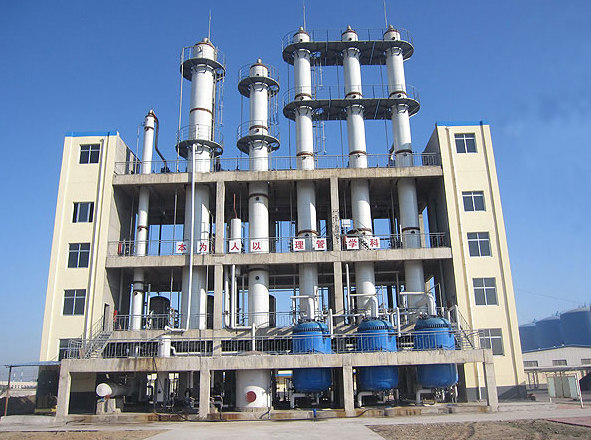Acetic acid, also known as ethanoic acid, is a versatile organic compound with a wide range of applications in various industries. It is commonly used as a chemical intermediate, solvent, preservative, and food ingredient. Acetic acid can be produced through different methods, but one of the most common approaches is through the use of an acetic acid plant and its associated production process. In this article, we will explore the advantages of an acetic acid plant and its production process in more detail.
1. Efficient Production:
Acetic acid plants are designed to produce acetic acid on a large scale, ensuring efficient and cost-effective production. These plants are equipped with advanced technologies and process control systems that optimize the production process, minimize energy consumption, and maximize yield. The continuous operation of the plant allows for high productivity and consistent output of acetic acid.
2. High Purity:
Acetic acid plants are capable of producing acetic acid with high purity levels. The production process involves multiple stages of purification, including distillation and separation techniques, to remove impurities and by-products. As a result, the acetic acid produced in these plants meets strict quality standards and can be used in a wide range of applications, including pharmaceuticals, food, and industrial processes.

Acetic Acid Plant
3. Flexibility in Feedstock:
Acetic acid plants offer flexibility in terms of feedstock selection. They can be designed to process various raw materials, such as methanol, ethanol, acetaldehyde, or ethylene. This versatility allows the plant to adapt to changing market conditions and availability of feedstocks. It also enables the utilization of different feedstocks based on their cost, availability, and sustainability factors.
4. Integration with Downstream Processes:
Acetic acid plants can be integrated with downstream processes to maximize efficiency and value creation. For example, they can be linked with esterification units to produce esters, which have applications in the production of solvents, plastics, and fragrances. Integration with other chemical processes enables the utilization of acetic acid as a key building block for the synthesis of various products, leading to a more integrated and sustainable production system.
5. Environmental Benefits:
Modern acetic acid plants are designed with environmental considerations in mind. They incorporate technologies and practices that minimize the environmental impact of the production process. For instance, they may employ advanced emission control systems to reduce air pollutants and utilize waste heat recovery systems to optimize energy consumption. Some plants may also explore the use of renewable feedstocks or implement carbon capture and utilization technologies to mitigate greenhouse gas emissions.
6. Economic Benefits:
Acetic acid plants contribute to local and national economies through job creation, investment, and export opportunities. These plants typically require skilled labor for their operation and maintenance, providing employment opportunities in the surrounding communities. Additionally, the production of acetic acid supports a wide range of downstream industries, such as pharmaceuticals, textiles, adhesives, and food and beverage, leading to economic growth and value generation.
7. Quality Control and Safety:
Acetic acid plants prioritize quality control and safety measures throughout the production process. Stringent quality control protocols are implemented to ensure the consistent production of high-quality acetic acid. Safety systems, including process monitoring, emergency response plans, and personnel training, are in place to minimize the risks associated with acetic acid production.
8. Global Availability:
Acetic acid plants are strategically located in different regions around the world, ensuring the availability of acetic acid on a global scale. This allows industries in various countries to access a reliable supply of acetic acid for their manufacturing processes, thereby supporting their growth and development.
Conclusion
Acetic acid plants offer several advantages in the production of acetic acid. They enable efficient and high-purity production, provide flexibility in feedstock selection, allow for integration with downstream processes, offer environmental and economic benefits, prioritize quality control and safety, and ensure global availability. These advantages make acetic acid plants crucial components of the chemical industry, supporting numerous applications and contributing to sustainable economic development.
















